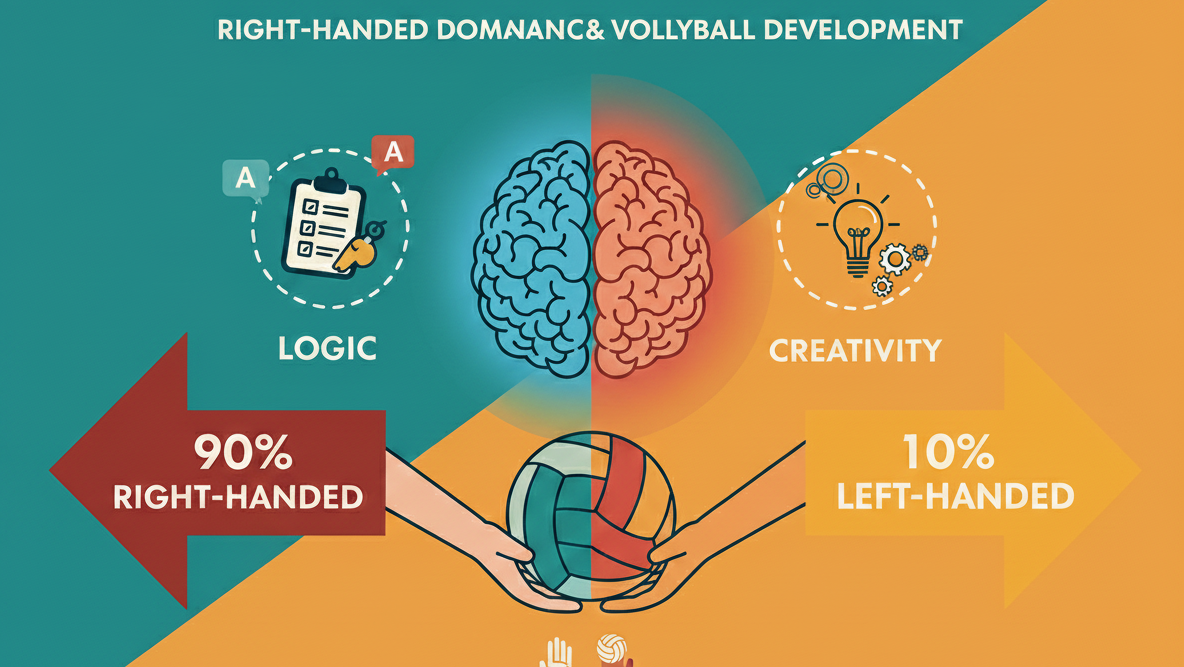Ninety percent of humanity is right-handed. This appears to be an undisputed fact. Conversely, only 10% are left-handed. This asymmetry reveals many insights worth exploring.
This article examines why right-handedness is overwhelmingly more common than left-handedness and what this means for athletic development.
The Birth of Language Led to Right-Handed Dominance?
While various theories explain the emergence of right-handed society, the most widely accepted hypothesis is the “Left-Brain, Right-Brain Theory.”
The left hemisphere of the brain connects to the right side of the body, while the right hemisphere connects to the left side. This suggests that right-handed individuals primarily utilize their left brain, while left-handed individuals rely more heavily on their right brain.
The left brain governs language – the defining characteristic of humanity.
The hypothesis suggests that humans developed their left brain through language acquisition, consequently favoring right-side body usage. This forms the foundation of the Left-Brain, Right-Brain Theory.
Are the Remaining 10% of Left-Handers Society’s Innovators?
While the Left-Brain, Right-Brain Theory has merit, why does 10% of the population remain left-handed? Experts propose the following hypothesis:
“Left-handed individuals, with their dominant right brain (associated with creativity), may have been valued for creating innovative tools that no one else could conceive. Logic-driven left-brain thinking alone cannot sustain smooth communication. Left-handers likely served as society’s lubricant… The predominance of right-handedness traces back to human ancestors 1.8 million years ago.”
Professor Emeritus Kenichi Nishiyama, Saitama University
In essence, left-handers serve as humanity’s innovators.
Research into famous left-handed individuals reveals interesting patterns. Among U.S. Presidents from the 38th onward, 5 out of 7 were left-handed – a remarkable ratio in a society where 90% are right-handed.
Left-Brain and Right-Brain Thinking in Sports
Which type of thinking is necessary for high athletic performance – left-brain or right-brain?
This question, while I pose it myself, is fundamentally unproductive.
Left-brain thinking represents logical processing.
Without logical thinking ability, athletes cannot improve their performance (technique, skills, etc.). Logical thinking and language skills are essential for accurately understanding complex game situations. In team sports, immediate and precise communication with teammates becomes crucial.
Right-brain thinking represents creative processing.
Sports are sometimes called art. Athletic performance often occurs in dimensions beyond logical thinking – through “intuition” and “inspiration.” This makes sense, given that many game situations require split-second decisions with no time for logical processing.
Both logical and creative thinking abilities are essential. The relationship between left-brain and right-brain thinking is such that neither can be absent.
Not Being Overly Constrained by “Dominant” Preferences
Finally, let me address the left-brain/right-brain issue in sports coaching.
Personally, I believe it’s crucial not to become overly constrained by concepts like dominant hand or foot preferences.
Depending on maturity and age group, youth athletes should focus on balanced body usage rather than being limited by dominant hand/foot preferences.
Without conscious effort, players naturally use their dominant hand and foot. When they consciously try using their non-dominant side, it initially feels completely uncoordinated.
However, without practice, the non-dominant side will never develop responsiveness.
Therefore, even brief daily exercises using the non-dominant hand/foot could activate right-brain function in right-handed individuals, potentially enabling previously impossible creative plays (and vice versa for left-handed players).
While such approaches may seem meaningless in the short term, their long-term benefits could be substantial.
Practical Applications in Youth Volleyball Development
This neurological understanding provides valuable insights for comprehensive athlete development programs.
Bilateral Training Benefits:
- Motor Pattern Development: Training both sides creates more complete movement patterns
- Injury Prevention: Balanced development reduces asymmetrical stress on joints and muscles
- Cognitive Flexibility: Cross-lateral movements enhance neural connectivity and decision-making speed
Implementation Strategies:
- Daily Non-Dominant Drills: Brief sessions using non-preferred hand for passing, setting, or serving
- Creative Problem-Solving: Encourage innovative solutions rather than rigid technical execution
- Cognitive-Motor Integration: Design drills that challenge both logical planning and intuitive reaction
This approach aligns with long-term athlete development principles, prioritizing comprehensive growth over immediate performance gains.
Note: While brain lateralization research provides interesting perspectives, current neuroscience emphasizes brain hemisphere cooperation rather than strict division of functions. The practical value lies in promoting balanced physical and cognitive development rather than reinforcing stereotypes about left/right-brain dominance.
Keywords: bilateral training, neuroplasticity in sports, ambidextrous development, youth volleyball training, cognitive-motor skills, brain hemisphere function, balanced athletic development, creative sports training


